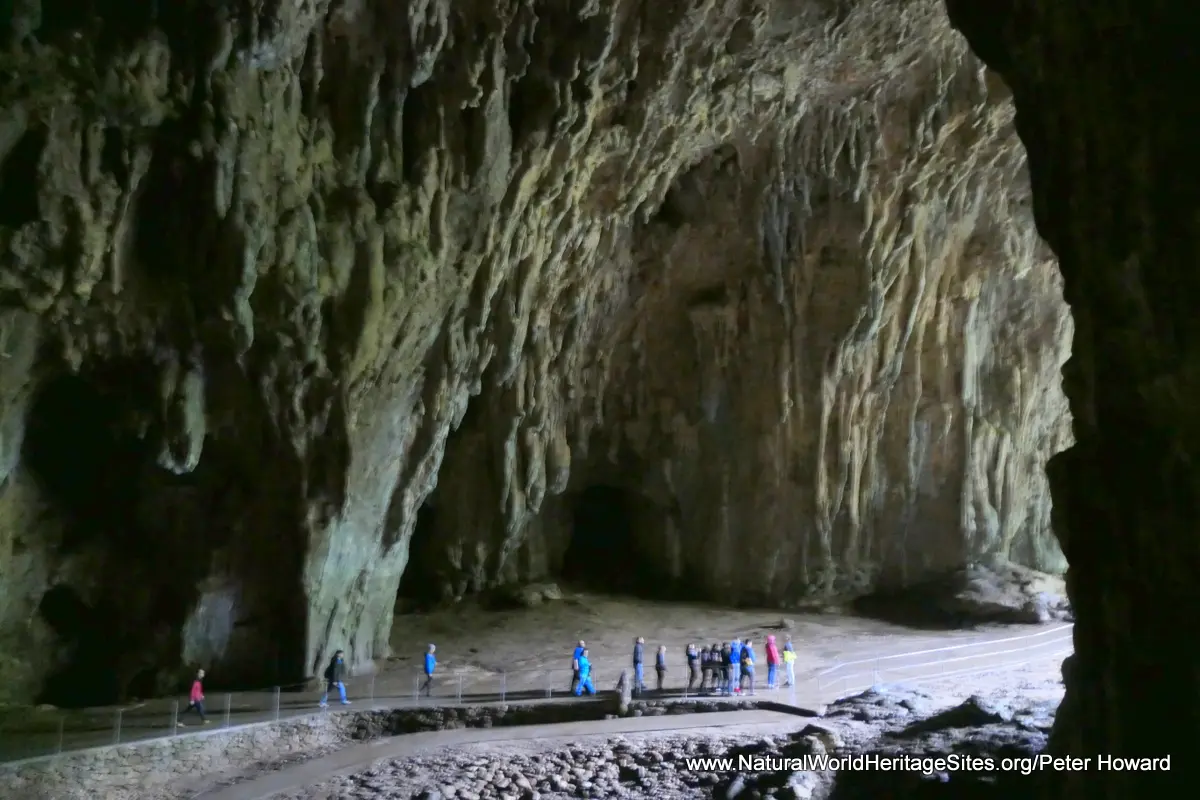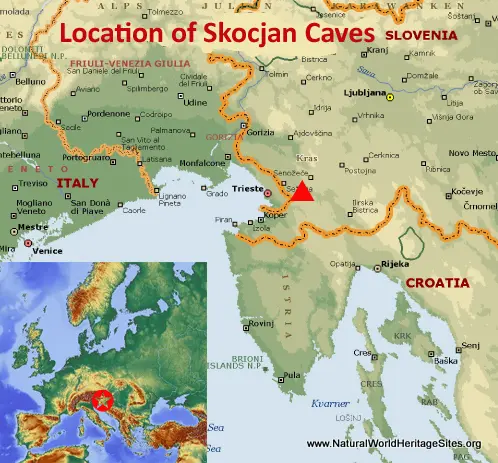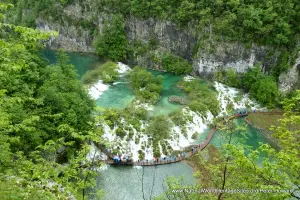EXPLORE Skocjan Caves with this slideshow, check the location map and get all the facts and information below.
For slideshow description see right or scroll down (mobile). Click to view slideshow
Location and Values: The Skocjan Caves system is located in south-west Slovenia, near the border with Croatia and Italy. It is an exceptional limestone cave system, with one of the world’s largest known underground river canyons, carved out by the roaring torrents of the Reka River. Throughout its 6km of cave passages the site provides an awe-inspiring auditory and visual spectacle for visitors. The scale of the underground passages, canyon, and chambers is exceptional, while the (relatively modest) formations of stalactites, stalagmites and rimstone pools are also noteworthy. The Skocjan Caves rank amongst the first caves in the world to be explored and documented scientifically, and the term ‘karst’ – which is widely used in scientific and geological literature – is derived from early research carried out here (on Slovenia’s Kras Plateau, translated as ‘karst’).
Conservation Status and Prospects. According to IUCN’s Conservation Outlook Assessment (2017) the conservation status of the Skocjan Caves is ‘good, with some concerns’. The IUCN report notes that although a good management system for the site is in place its small size makes it vulnerable to threats originating outside its boundaries. The report notes that urban encroachment and intensification of development in the vicinity of the site is a serious problem. Global climate change may also affect the property in the long term, although the nature of any potential impact is difficult to predict or mitigate.
Links:
Google Earth
UNESCO Official Website
IUCN Conservation Outlook
Slideshow description
The slideshow ‘tells the story’ of the Skocjan Caves with a portfolio of photos by Peter Howard from a visit in May 2019. They illustrate the visitor experience with photos from the visitor centre and the ‘Classical Karst’ features in the landscape around the caves. Access to the underground passages and magnificent canyon is restricted and managed in tightly-controlled groups, with no photography permitted. So the few photos of the cave interior are reproduced from posters, information panels and marketing products.
Photos taken at the cave entrance provide a vivid impression of the size of the cave chambers, while views into the massive ‘collapse’ outside the cave (a karst sinkhole, known technically as a ‘collapsed doline’) illustrate the diversity of geological ‘karst’ features that contribute to the site’s international recognition. Although biodiversity is not listed as one of the criteria for Skocjan’s world heritage status, it is worth recognizing the occurrence of some very unusual cave-adapted species, including a blind white cave salamander and many rare specialized invertebrates and crustaceans. The collapsed dolines also provide unusual environmental conditions in which a number of other rare and endangered species of animals and plants survive.
Factfile
Website Categories: Caves & Karst;
Area: 4 km2
Inscribed: 1994
Criteria:
- Exceptional natural phenomenon (vii);
- Geological features (viii);





